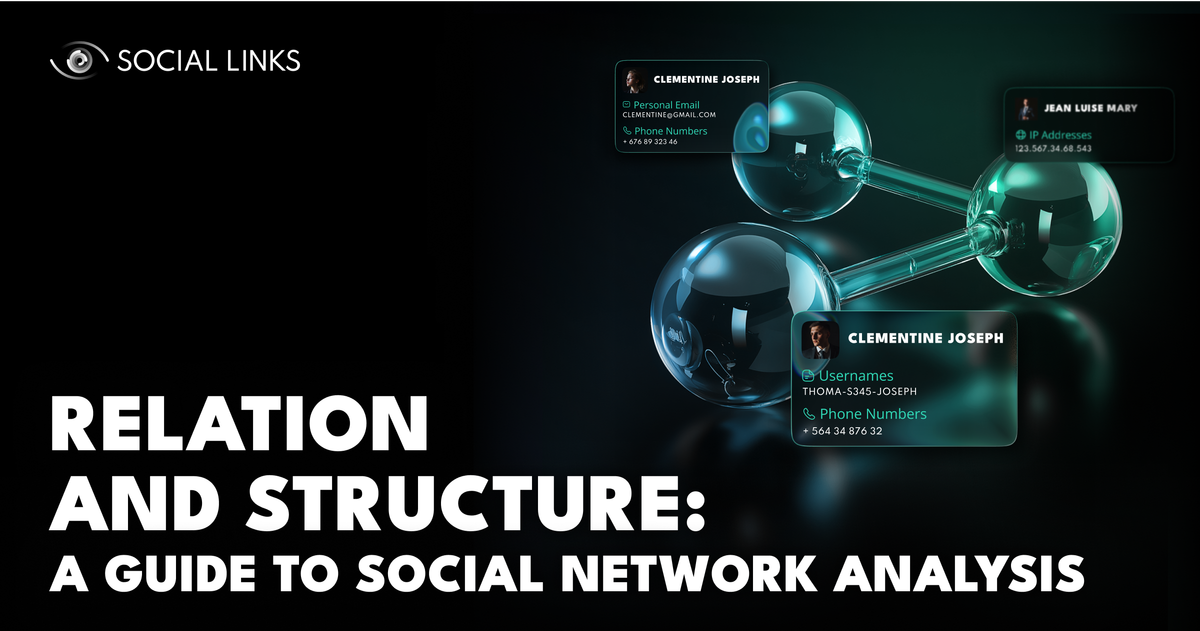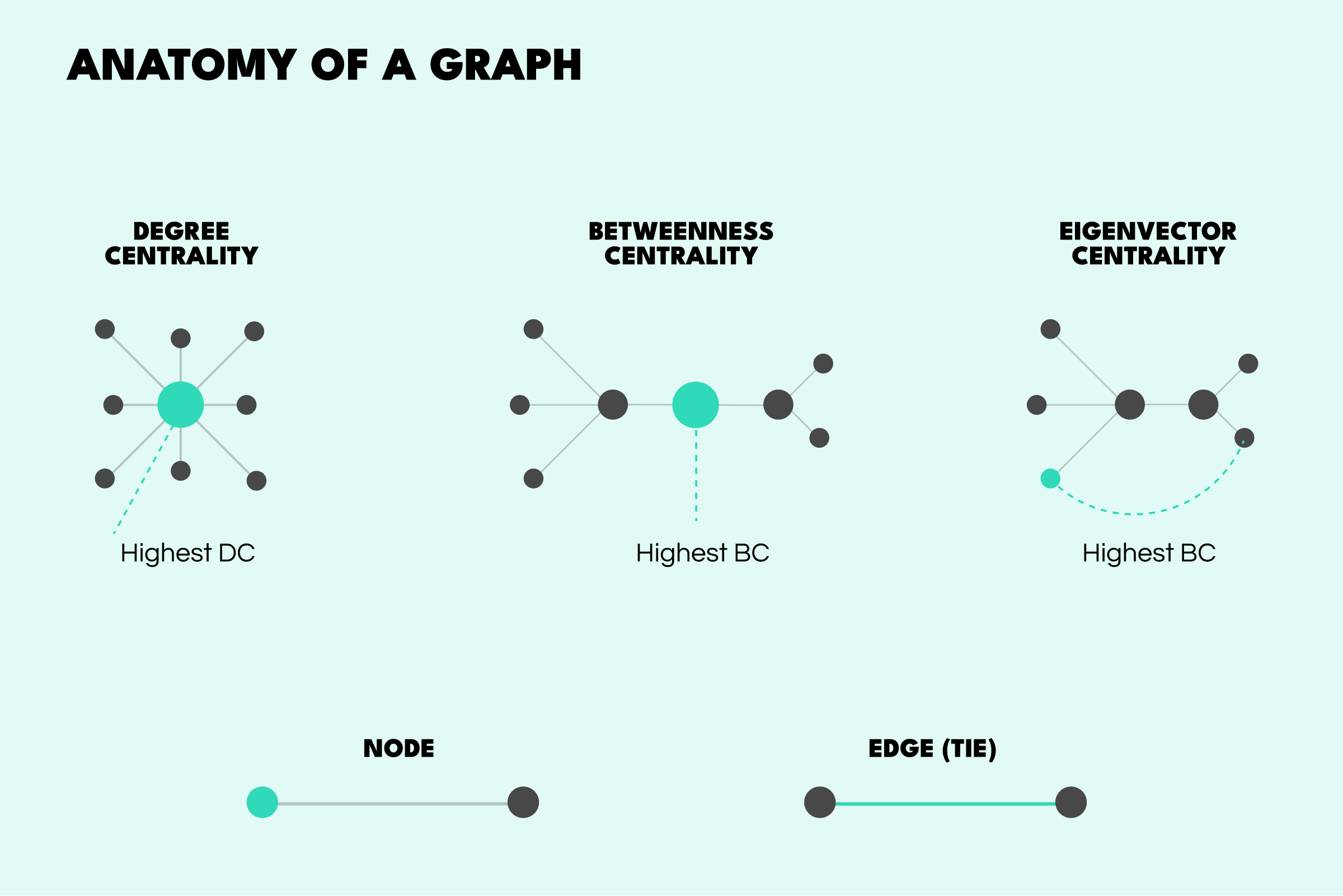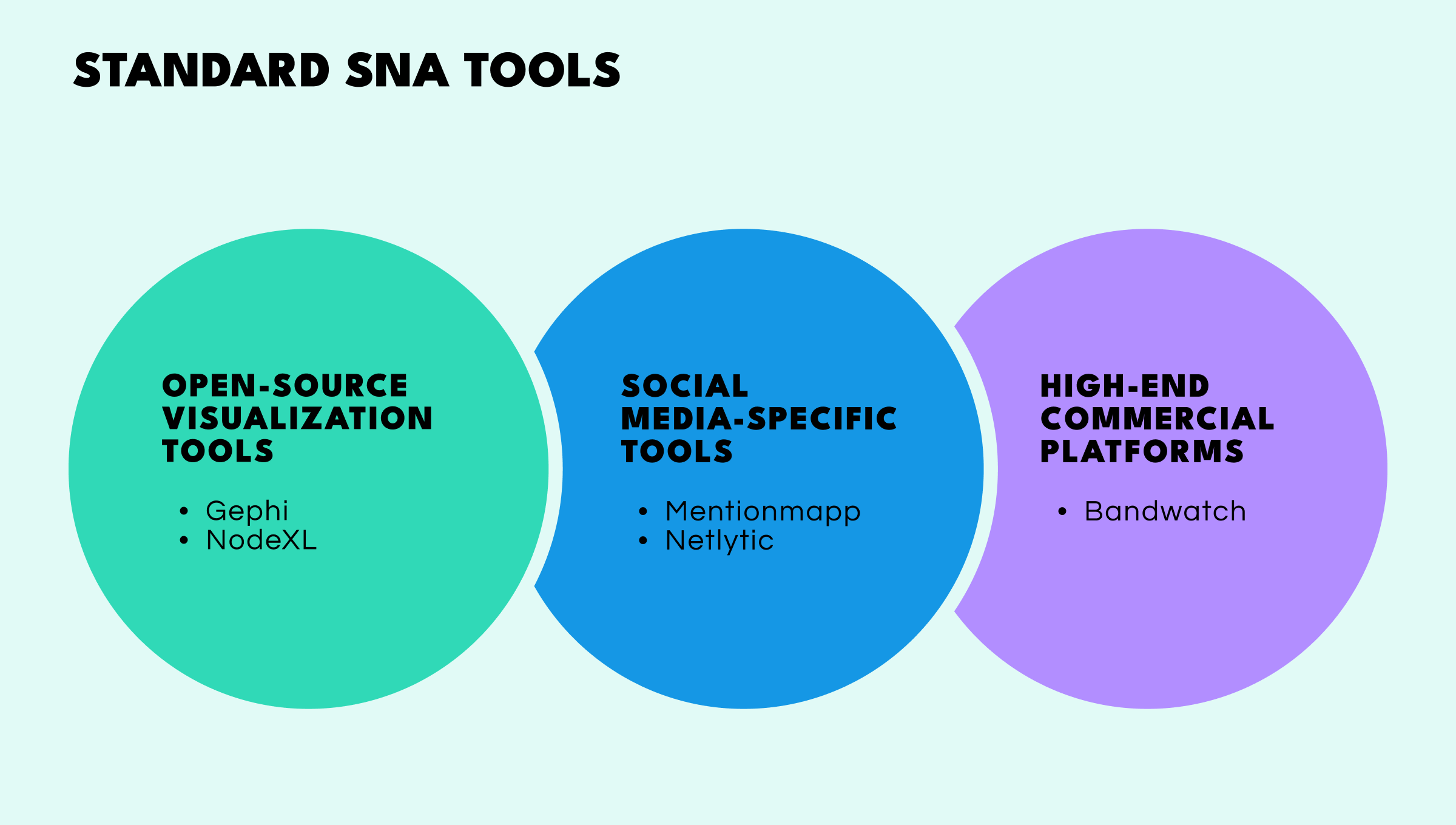Relation and Structure: A Guide to Social Network Analysis


Relationships are currency. The way people, organizations, and ideas link together shapes how information spreads, how influence takes hold, and how communities form. Social Network Analysis is the field that maps and measures these relationships, shifting the view from isolated individuals to webs of interconnected nodes.
Applied to digital life—especially social media—Social Network Analysis becomes a powerful lens for understanding the dynamics of modern society from marketing campaigns and political movements to criminal enterprises and the spread of disinformation.
Read on for a guided tour of Social Network Analysis—its core principles, the tools that bring it to life, and real-world effect when applied to platforms such as Twitter/X and LinkedIn. We’ll close with a look at advanced integrated platforms like SL Pro and Crimewall, which move the needle by merging data collection, analysis, and visualization into one streamlined workflow.
Whether it’s a circle of friends, a corporate org chart, or a cluster of Twitter accounts, every network can be broken down into basic building blocks. You can think of it like the wiring under the hood of human interaction. And at its core, Social Network Analysis rests on two major graph elements—nodes and edges—and a handful of key gauges known as centrality measures.
Nodes: These are the actors or entities in a network. In social contexts, nodes usually represent people or groups.
Edges (or Ties): These are the relationships or interactions that connect nodes. They can be directional (for example, User A follows User B on Twitter) or non-directional (for example, two people in the same Facebook group).
The real power of Social Network Analysis doesn’t just come from spotting who’s connected to whom. It comes from reading the patterns in those connections—the shape of the network itself. To do that, analysts rely on a set of yardsticks called centrality measures. These metrics highlight not just the busy hubs, but also the hidden bridges, the fast spreaders, and the truly influential players.
Degree Centrality: The simplest metric, this measures the number of direct connections a node has. A node with high degree centrality is a "hub" but not necessarily influential.
Betweenness Centrality: This tracks how often a node sits on the shortest path between two other nodes. Nodes with high betweenness centrality act as bridges or gatekeepers, controlling the flow of information between clusters. These are often the most critical nodes—their removal can fracture the network.
Closeness Centrality: This measures the average distance from one node to all other nodes in the network. A node with high closeness centrality can spread information to the rest of the network very quickly.
Eigenvector Centrality: This is a measure of influence. It holds that one connection to a powerful node is more valuable than many connections to weak ones. A node has high eigenvector centrality when it links to other nodes that
By applying these metrics, analysts can spot key players, uncover hidden communities (clusters), and gauge the overall health and structure of a network. When SNA is combined with visual inspection of digital assets, the analytical power increases dramatically. For example, reverse image search has become a standard OSINT technique for mapping identity correlations, geolocating content, and linking accounts across platforms — a workflow explored in detail in Reverse Image Search — A Proven OSINT Technique.

There’s a wide range of tools available for carrying out social media network analysis—from free, open-source software to advanced commercial platforms. These Social Network Analysis tools help analysts map relationships, measure influence, and spot patterns in complex networks.
Open-Source Visualization Tools: Often referred to as the “Photoshop for graphs”, Gephi is a free, powerful platform for visualizing and exploring networks. It’s a social network mapping tool that allows you to import datasets, test different layouts, and run metrics to build detailed network maps. NodeXL is another option, and one that’s great for Social Network Analysis beginners, as it offers direct integration with Microsoft Excel, meaning users can quickly import their data and get going.
Social Media Network Analysis Tools: Some solutions focus on mapping online conversations. Mentionmapp creates real-time, interactive maps of Twitter activity, showing who’s talking to whom and which hashtags tie them together. The Social Network Analysis online tool Netlytic can pull data from sources like Twitter and YouTube, then analyze it to track public conversation.
High-End Commercial Platforms: Enterprise tools like Brandwatch offer extensive social listening capabilities, combining Social Network Analysis with sentiment analysis (tracking positive or negative tone) and demographic data to deliver insightful market intelligence.

The true value of Social Network Analysis is revealed in its practical application. Different social media network analysis tools make this possible—from open-source platforms that let anyone visualize networks, to commercial systems built for large-scale, professional analysis. So here’s a quick look at how Social Network Analysis shines through practical application.
X's public nature and real-time stream of conversation make it a prime target for Social Network Analysis, offering analysts a live view of how information and influence spread.
Use Case: Tracking Disinformation. During an election, a state-sponsored group might use a network of bots to amplify a certain narrative. Social Network Analysis would reveal this instantly. While each bot account might look normal on its own, a network map would expose a tight cluster of new accounts all retweeting the same central account, with few natural links to the wider X/Twitter community. This structural anomaly, flagged up through X/Twitter network analysis, is a clear fingerprint of coordinated inauthentic behavior. Workflows like these are foundational in modern OSINT, where visual graph-based link mapping significantly accelerates detection and attribution. For a deeper look at how link-driven graph intelligence supports real investigations, see Link Analysis — Lifeblood of the Modern Investigation.
While LinkedIn’s data is more private, its structured layout gives analysts an entry to corporate networks, revealing connections and insights that support intelligence gathering and due diligence.
Use Case: Strategic Recruitment. A tech company wants to hire a top AI engineer from a competitor. While manual searches would be long-winded and overcomplicated, Social Network Analysis can be deployed to map the public connections of the competitor's AI division. This way, the LinkedIn network analysis may identify a "bridge" employee—a middle manager with high betweenness centrality who connects the AI team to several other departments. While this person isn’t the star engineer, they’re the social connector who likely understands the team’s internal dynamics, making them an ideal first target for a recruitment approach.
While tools like Gephi are powerful in terms of analysis, their primary limitation relates to data acquisition. Before data can be coherently visualized, it must first be gathered and cleaned. This is where modern, integrated OSINT platforms bridge a critical gap.
SL Pro is a high-performance data aggregation engine that works with industry-standard analysis tools like Maltego. With its powerful suite of proprietary search methods, SL Pro automates the painstaking work of collecting network data from hundreds of sources.
Scenario: Mapping a Transnational Criminal Network. Imagine an investigation that starts with a single LinkedIn profile of a known associate. Using SL Pro within Maltego, an analyst can instantly pull all of that person’s public connections, forming the first layer of the network graph. From there, SL Pro can pivot on each new node, checking their presence on other platforms like Telegram or X/Twitter.
The result is a multi-layered, inter-platform map that would be impossible to assemble manually. Through this, analysts might discover that some “professional” LinkedIn connections are actually communicating through pseudonymous accounts in a private Telegram channel.
SL Pro doesn’t just collect data; it reveals the edges connecting otherwise separate points, turning scattered information into a coherent network.
Providing a complete, end-to-end OSINT environment, combining data acquisition, analysis, visualization, and case management in a single platform, SL Crimewall takes integration one step further. Analysts can move seamlessly from raw data to actionable insight without switching tools.
Scenario: Counter-Terrorism Intelligence. Imagine an agency monitoring a radicalized group online. Using Crimewall, analysts start by inputting the seed accounts of known members. The platform automatically scans social media, forums, and even the Dark Web, pulling in associated profiles and communications.
Crimewall’s built-in graph visualization maps the network in real-time, applying centrality metrics as the data streams in. Analysts can instantly spot key propagandists—nodes with high closeness centrality—and recruiters who act as bridges to new members—nodes with high betweenness centrality.
The platform lays bare the entire network, from core leadership to vulnerable periphery, within a single, collaborative interface. This streamlined view allows the agency to act quickly and precisely, turning complex digital chatter into clear operational insight.
Social Network Analysis is an indispensable discipline for anyone looking to understand the complex dynamics of human interconnection in the digital age. The field offers a wide ecosystem of tools, from accessible open-source social network mapping tools like NodeXL and Gephi to specialized social listening platforms.
The evolution of Social Network Analysis points to one clear trend: integration is key to unlocking its full potential. Today, the biggest challenge is no longer the analysis itself, but gathering and consolidating network data from a fragmented digital world. This is where advanced platforms shine.
Social Network Analysis tools like SL Pro supercharge traditional analysis solutions by automating data aggregation. All-in-one environments like Crimewall go even further, providing a seamless workflow from discovery to final report. By combining data collection and network mapping, these platforms help analysts move beyond raw data points, revealing the deeper structural patterns that guide strategic decision-making and deliver actionable insights.
What is Social Network Analysis?
Social Network Analysis (SNA) is the study of relationships between people, organizations, or entities within a network. It uses nodes and edges to map connections and applies metrics like centrality to identify key influencers and hidden communities.
How does social media network analysis work?
Social media network analysis examines connections on platforms like X/Twitter and LinkedIn. It helps detect disinformation campaigns, track community growth, and identify influential users who shape conversations.
What are the best social network analysis tools?
Popular Social Network Analysis tools include Gephi, NodeXL, and Netlytic. Commercial platforms like Brandwatch and integrated OSINT solutions like Crimewall offer advanced analytics and visualization features.
What are social network mapping tools?
Social network mapping tools, such as Gephi or NodeXL, create visual graphs of relationships. They allow analysts to see clusters, hubs, and bridges in a network, making it easier to detect influencers or coordinated activity.
How is X/Twitter network analysis used?
X/Twitter network analysis maps user interactions such as retweets, mentions, and hashtag connections. It’s widely used to detect bot networks, monitor disinformation campaigns, and track viral content in real time.
If you'd like to learn more about how Social Links solutions could revolutionize your SNA workflows and results, clikc the button below and we'll set up a personalized demo with one of our specialists.